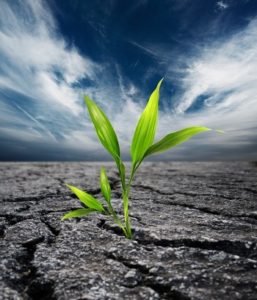 On September 12, 2001, the theater was dark, the museum galleries were empty and the phones didn’t ring. I was a shared-services marketing director then – with responsibilities to sell subscriptions and single tickets at the dawn of the Scottsdale Center for the Performing Arts’ new season as well as to launch the new season of the not-quite-2-year-old Scottsdale Museum of Contemporary Art.
On September 12, 2001, the theater was dark, the museum galleries were empty and the phones didn’t ring. I was a shared-services marketing director then – with responsibilities to sell subscriptions and single tickets at the dawn of the Scottsdale Center for the Performing Arts’ new season as well as to launch the new season of the not-quite-2-year-old Scottsdale Museum of Contemporary Art.
We remember the fear and uncertainty of 9/11. Shock. A desperate need to connect with family and friends. Withdrawal to places of physical and emotional safety. We asked, “What does this mean?” and we quickly “battened down the hatches” to protect the budgets and missions of our fragile organizations against the storm that was sure to follow.
But what do we remember of 9/12? What do we remember of the long and arduous process that commenced the next day – the effort to restore calm, order and clarity? How long did it take to achieve strategic thinking?
For me: 5 weeks.
It took 5 weeks to realize that I wasn’t the only arts marketing director – and ours wasn’t the only theater or museum – having an impossible time selling tickets and attracting visitors. That was the Tuesday morning I awoke with the idea to telephone the VP of Advertising of the Arizona Republic and ask if the region’s major newspaper might donate a FREE FULL PAGE AD by which the entire Valley arts & cultural community could offer a “universal 2-for-1 coupon.” (The Internet wasn’t central to anybody’s communications at that time.) What I pitched was not a sophisticated marketing campaign but rather a heartfelt and collaborative gesture to extend an invitation and offer permission for people to gather together for theatre, music, dance, art, history and cultural experiences.
Amidst what I’m sure were her own challenges, the VP of Advertising immediately said, “Yes!” (a decision for which I will be forever grateful) – and with quick communication and unprecedented teamwork among a large number of arts & cultural organizations, the idea was executed in just 5 days.
The public response was tremendous and gratifying. And that joint effort sparked a remarkable period of goodwill and collaboration among Arizona’s arts & cultural organizations that profoundly shaped my career as a teacher, consultant, and champion of the cause of audience development.
What is the nature of organizational resilience?
I’ve often wondered about that “in-between” 5-week period. What took so long? Could it have happened faster? What qualities enable some people to bounce back from adversity faster or more effectively than others? How do people and organizations prepare themselves to recover from inevitable crises and setbacks? How can we learn to more readily recover our sense of purposefulness and strategy? What is the connection between resilience and collaboration?
Recently, these questions led me to a June 24, 2011, article in the Harvard Business Review by George S. Everly, Jr. entitled, “Building a Resilient Organizational Culture.” He observes:
- Resilient organizations invest in their client base.
- Resilient organizations invest in their leaders.
- Resilient organizations invest in all levels of their workforce.
What struck me was what is NOT on that list. He didn’t suggest to invest in technology. He didn’t advise to stockpile resources. And he didn’t urge the accumulation of cash reserves.
Organizational resilience, he asserts, is all about sharing a common sense of purpose. The rest can be figured out along the way.
How interesting: Resilience is less a function of strategy – and more a function of vision! Strategies break. Vision bends. Resilience means flexibility.
In these worrisome times, arts & cultural organizations of every size and genre would do well to remember that we exist not just to be the beneficiary of our community’s generosity but to inspire the gathering and connection of the communities we serve.
Though the pain of crisis may be severe, we must not dwell there. The spirit of 9/12 reminds us that our foremost responsibility – and opportunity – is to keep moving forward.
Resilience.
# # #
